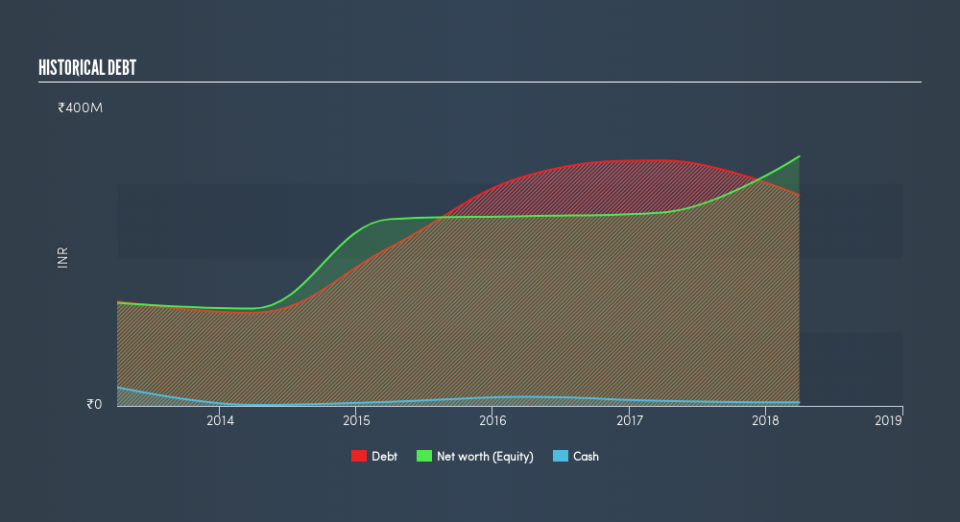Is ASL Industries Limited's (NSE:ASLIND) Balance Sheet A Threat To Its Future?

Investors are always looking for growth in small-cap stocks like ASL Industries Limited (NSE:ASLIND), with a market cap of ₹160m. However, an important fact which most ignore is: how financially healthy is the business? Given that ASLIND is not presently profitable, it’s vital to assess the current state of its operations and pathway to profitability. We'll look at some basic checks that can form a snapshot the company’s financial strength. However, this is just a partial view of the stock, and I recommend you dig deeper yourself into ASLIND here.
ASLIND’s Debt (And Cash Flows)
Over the past year, ASLIND has reduced its debt from ₹331m to ₹284m – this includes long-term debt. With this reduction in debt, ASLIND currently has ₹4.8m remaining in cash and short-term investments , ready to be used for running the business. Its negative operating cash flow means calculating cash-to-debt wouldn't be useful. For this article’s sake, I won’t be looking at this today, but you can examine some of ASLIND’s operating efficiency ratios such as ROA here.
Can ASLIND meet its short-term obligations with the cash in hand?
With current liabilities at ₹301m, the company arguably has a rather low level of current assets relative its obligations, with the current ratio last standing at 1x. The current ratio is calculated by dividing current assets by current liabilities.
Can ASLIND service its debt comfortably?
With debt reaching 84% of equity, ASLIND may be thought of as relatively highly levered. This is a bit unusual for a small-cap stock, since they generally have a harder time borrowing than large more established companies. But since ASLIND is presently unprofitable, sustainability of its current state of operations becomes a concern. Maintaining a high level of debt, while revenues are still below costs, can be dangerous as liquidity tends to dry up in unexpected downturns.
Next Steps:
ASLIND’s high cash coverage means that, although its debt levels are high, the company is able to utilise its borrowings efficiently in order to generate cash flow. But, its low liquidity raises concerns over whether current asset management practices are properly implemented for the small-cap. Keep in mind I haven't considered other factors such as how ASLIND has been performing in the past. I recommend you continue to research ASL Industries to get a more holistic view of the stock by looking at:
Future Outlook: What are well-informed industry analysts predicting for ASLIND’s future growth? Take a look at our free research report of analyst consensus for ASLIND’s outlook.
Historical Performance: What has ASLIND's returns been like over the past? Go into more detail in the past track record analysis and take a look at the free visual representations of our analysis for more clarity.
Other High-Performing Stocks: Are there other stocks that provide better prospects with proven track records? Explore our free list of these great stocks here.
We aim to bring you long-term focused research analysis driven by fundamental data. Note that our analysis may not factor in the latest price-sensitive company announcements or qualitative material.
If you spot an error that warrants correction, please contact the editor at editorial-team@simplywallst.com. This article by Simply Wall St is general in nature. It does not constitute a recommendation to buy or sell any stock, and does not take account of your objectives, or your financial situation. Simply Wall St has no position in the stocks mentioned. Thank you for reading.

